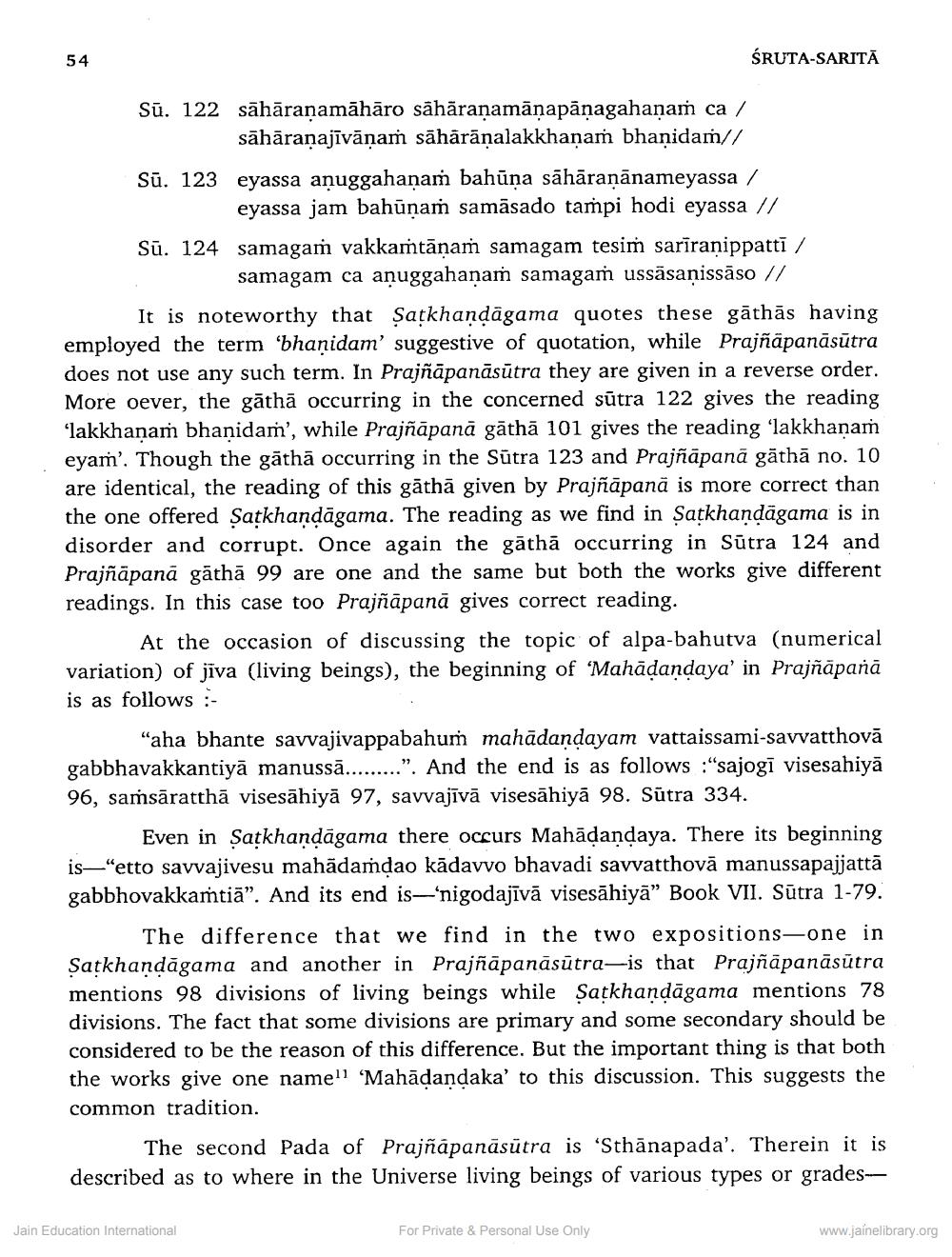________________
54
ŚRUTA-SARITĀ
Sū. 122 sāhāranamāhāro sāhāraṇamānapānagahanam ca /
sāhāranajīvānam sāhārānalakkhaṇam bhanidam// Sū. 123 eyassa anuggahanam bahūna sāhāranānameyassa /
eyassa jam bahūņam samāsado tampi hodi eyassa // Sū. 124 samagam vakkamtānam samagam tesim sariranippatti /
samagam ca anuggahanam samagam ussāsaņissāso // It is noteworthy that Satkhandāgama quotes these gāthās having employed the term 'bhanidam' suggestive of quotation, while Prajñāpanāsūtra does not use any such term. In Prajñāpanāsūtra they are given in a reverse order. More oever, the gāthā occurring in the concerned sūtra 122 gives the reading ‘lakkhanam bhanidam', while Prajñāpanā gāthā 101 gives the reading 'lakkhanam eyam'. Though the gāthā occurring in the Sūtra 123 and Prajñāpanā gāthā no. 10 are identical, the reading of this gāthā given by Prajñāpanā is more correct than the one offered Satkhandāgama. The reading as we find in Satkhandāgama is in disorder and corrupt. Once again the gāthā occurring in Sūtra 124 and Prajñāpanā gāthā 99 are one and the same but both the works give different readings. In this case too Prajñāpanā gives correct reading.
At the occasion of discussing the topic of alpa-bahutva (numerical variation) of jīva (living beings), the beginning of 'Mahādandaya' in Prajñāpanā is as follows:
"aha bhante savvajivappabahum mahādandayam vattaissami-savvatthovă gabbhavakkantiyā manussā.........". And the end is as follows :"sajogi visesahiyā 96, saṁsāratthā visesāhiyā 97, savvajīvā visesāhiyā 98. Sūtra 334.
Even in Satkhandāgama there occurs Mahādandaya. There its beginning is—"etto savvajivesu mahādamdao kādavvo bhavadi savvatthovā manussapajjattā gabbhovakkamtiā”. And its end is—'nigodajīvā visesāhiyā" Book VII. Sūtra 1-79.
The difference that we find in the two expositions-one in Satkhandagama and another in Prajnapanasutra is that Prajnapanasutra mentions 98 divisions of living beings while Satkhandāgama mentions 78 divisions. The fact that some divisions are primary and some secondary should be considered to be the reason of this difference. But the important thing is that both the works give one namell 'Mahādandaka' to this discussion. This suggests the common tradition.
The second Pada of Prajñápanāsūtra is 'Sthānapada'. Therein it is described as to where in the Universe living beings of various types or grades
Jain Education International
For Private & Personal Use Only
www.jainelibrary.org




